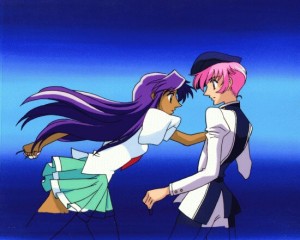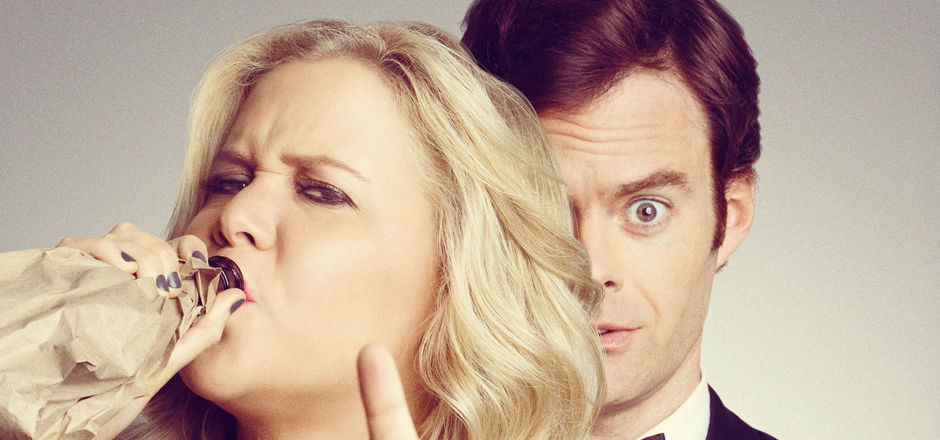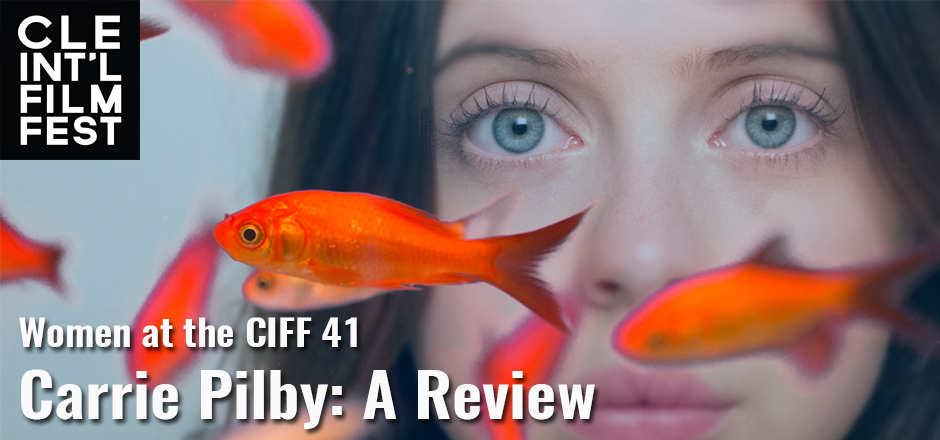For a conservative country, Japan has been on the front of LGBTQ representation in the media for years. Though it’s true it might have something to do with entire subgenres dedicated to the love and sexual relationships between members of the same sex in manga and anime (shoujo/shounen-ai; yaoi and yuri), many of the most popular and mainstream works of anime and manga include gay and lesbian characters as members of the secondary cast.
There’s a long list of characters that openly identify as gay or lesbian in anime and manga. Once they openly identify, though, there is a tendency to entrap them within the confines of outrageous stereotypes and have them play a very specific role in a story. More often than not, gay characters take the part of comic relief: their behavior is outrageous, they tend to have a very dangerous edge and are very often shown cross-dressing and taking up feminine mannerisms. When it comes to the representation of lesbian characters, though there are instances where they are used as comic relief, much of which involves grabbing the breasts of the main female character, they are generally very serious, straightforward, usually pretty badass and overly sexualized.
These characters also tend to belong to specific genres. Most of the examples of gay characters belong to contemporary shounen mangas, whereas the lesbian characters tend to be found in older shoujo mangas.
Grell Sutcliff from Kuroshitsuji began the series as an antagonist and is now an ally of the protagonist, though one that is not to be fully trusted. Grell has a flamboyant, over-the-top personality, prone to theatrics and loud exclamations of love towards Sebastian, the title character, who is generally annoyed with Grell’s outrageous behavior and his constant claims that he’d like to carry his babies (though biologically impossible). But Grell is also a bloodthirsty, merciless and dangerous grim reaper, and on the job, he exchanges his flamboyant attitude for chilling coldness. In spite of that, Grell’s main role throughout the series has been to provide a lighter, more comical face to Sebastian’s cold one.
Another famous representation of gay men – or in this case, bisexual man – would be Ryoji “Ranka” Fujioka from Ouran High School Host Club, Haruhi’s father. His behavior in the series is always perky and peppy, bordering on outrageous, and he’s usually shown in women’s clothing. He does have a more serious and dangerous side, displayed whenever he runs to protect his precious daughter.
In popular shounen series like Bleach, One Piece and Fairy Tail, gay characters take secondary roles but still carry on this comic relief trend. In Fairy Tail, there’s Bob, the cross-dressing guild master of Blue Pegasus, who behaves in a loud and effeminate manner and is a hopeless flirt. He’s been on the series a handful of times but mostly for comic relief, with the exception of the time when he got dangerously angry at a mage for misusing her magic.
In Bleach, there’s a recurrent secondary character named Yumichika, an effeminate and flamboyant shinigami who later faces an arrancar named Charlotte (a large, black man), whose outrageous, drag queen-like behavior surpasses even Yumichika’s. Their fight, in spite of being for the protection of Kurakara town, is basically a war between ideals of beauty. Needless to say, the battle is mostly for laughs in spite of the precarious situation around them.
Lastly, One Piece features the “Queen of Queers” (Okama Queen), Emporio Ivankov, a drag queen who behaves in an outrageous manner and whose power is to turn people into a person of the opposite sex. The author of Once Piece confirmed that this character was inspired by Dr. Frank-N-Further, Tim Curry’s character on The Rocky Horror Picture Show, a classic gender-bender/drag-queen staple in cinema. In spite of how comical he usually is, Ivankov has a very dangerous and vindictive side that has been shown a couple of times in the series.
Lesbian characters, on the other hand, tend to be portrayed in a more serious manner in manga and anime. The first lesbian characters Western viewers encountered were probably Haruka Teno (Sailor Uranus) and Michuru Kaio (Sailor Neptune) from Sailor Moon. In fact, Sailor Moon has a long list of homosexual characters and couples, but this one is the most prominent. Both Haruka and Michuru were occasionally flirty, but mostly they were portrayed as mature, intelligent, serious and powerful characters rather than as comic relief.
Finding lesbian examples in anime and manga is a lot harder than gay characters, mostly because gay characters seem to already be a troupe of the shounen genre. The majority of examples come from older franchises like Devilman/Devilman Lady and Revolutionary Girl Utena, the classic gender-bender series that also featured powerful lesbian characters and a sexual attraction between the two leads, Anthy and Utena. The most recent ones come from the sci-fi anime Psycho Pass, but none are exactly prominent or as easy to spot as the few dedicated to comic relief, like Chizuru from Bleach, whose only role in the series so far has been the stalking and sexually harassing of Orihime.

Anthy and Utena from Revolutionary Girl Utena.
It’s not hard to see a gap between gay and lesbian characters – not only in stereotyping, but also in the representation for each group. Modern manga, especially shounen, frequently feature gay men, and though they usually use them as comic relief, they do have several appearances during the series and are given a chance to contribute to the main storylines. On the other hand, many examples of lesbian characters come from series decades old, and most of them feature mature women with violent sex appeal made for the enjoyment of the straight male audiences rather than lesbian women.
While perhaps the representation of lesbians is more serious and empowering, it’s a rarity in the market, unlike gay representation, which is more common but tends to be laced with stereotypes and is purely comical.
There’s a downside for both groups in anime and manga, but their presence can still be felt. More and more mangaka are incorporating gay and lesbian characters into their stories, creating new roles and personalities for them and hopefully make them break away from the tropes and stereotypes that tie them down.
Lorraine Acevedo Franqui writes for Girl In Capes from Puerto Rico and holds degrees in English Literature and Psychology. Her main interests are young adult lit, anything related to The Legend of Zelda and Kingdom Hearts, assorted shounen mangas and cats.








Zzz.. Grell is transgender, not gay. Nice job. -_- It’s stated in the manga by the character herself, and devalues your article completely, so no wonder you choose to leave that information out. Transphobic of you, really..
Oh, and HER flamboyant behavior, wanting to have babies comes from dysphoria and being a woman. Not your silly ‘gay stereotypes’. Do a little research before attacking an amazing and progressive character. Thanks.
That’s actually really interesting – is that ever addressed in the anime? I often find that an anime adaptation, especially a translation of an anime adaptation, leaves out a lot of things that would significantly improve visibility for different groups. Like for Hanji in Attack on Titan.
Grell is officially identified as transgender in the manga character guide confessional, something that is never addressed in the anime. Grell is consistently referred to with male pronouns in the anime (which is this article is discussing), and even the author of Black Butler goes back and forth between male and female pronouns when she discusses Grell, implying a non-binary possibility for the character.